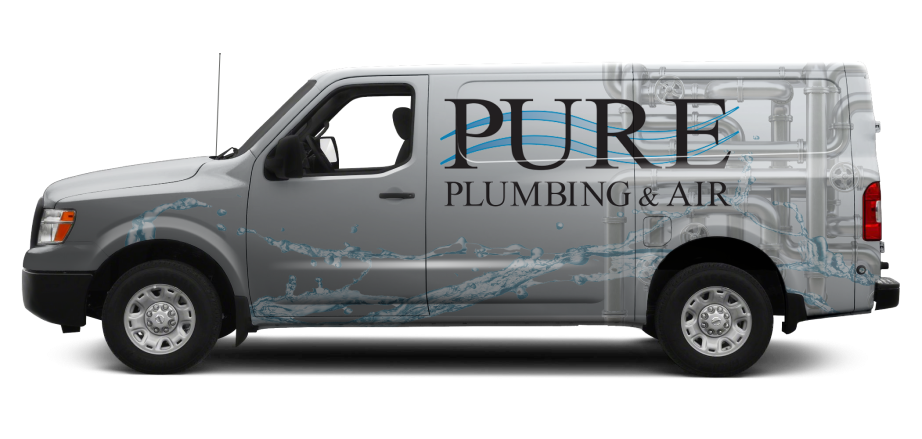Insulating the ductwork in your Las Vegas, NV home can boost efficiency and comfort. Ducts provide a pathway for warm or cool air to circulate to different living spaces in your residence. When insulation is lacking, this can cause air to leak from ducting, temperatures in your home to become uneven and your HVAC system may strain to keep up. Let’s discuss some signs that indicate your ducts need insulation to prevent cool air from escaping this summer.
Hot or Cold Spots
If your ductwork lacks insulation, you may find that your home doesn’t feel like it’s a consistent temperature throughout. You may feel your indoor air is humid and uncomfortable in the summer. This problem is likely to occur more in the rooms that are furthest from your HVAC equipment. This results in turning down the temperature on your thermostat to accommodate your comfort needs, which can overwork your air conditioning equipment. Adding insulation to ducts will ensure that cool air holds its temperature as it moves to different areas of your home.
Spike in Energy Consumption
If you’ve noticed that your energy bill has been increasing or that it is abnormally high, your ductwork may be the problem. Leaky ductwork that isn’t insulated will require more use of your HVAC system. Over time, this can lead to efficiency issues, raising your energy use. Not only can insulation around your ducting lower your utility bills, but there may also be rebates or tax incentives available when you take on this home improvement project.
Visible Issues
It’s important to have a professional periodically inspect your ductwork. If any damage is present, will inform you that you should have repairs made. Insulating the ductwork after repairs will ensure there is a tight barrier between the inside of your ducts and the area around it. If extensive damage is present and your ducts are very old, there may be a need to have sections replaced.
Moisture or Condensation Problems
If you have condensation forming around or within your ductwork, there will be a temperature difference that exists. This is often because of a lack of insulation. Have this problem addressed and have a professional insulate your ductwork. Otherwise, you’re putting your household at risk of a mold problem, which is dangerous to your health and well-being. Moisture can also cause ductwork to prematurely corrode and undergo damage.
Odd Noises
If you hear a lot of clanging, banging or rattling going on when your air conditioner is running, insulation may help. Ductwork can move or vibrate when there are differences in temperature present. Insulation helps promote a more normal temperature distribution. It can also muffle some of the normal noises that occur during runtime.
Indoor Air Quality Concerns
Your air conditioning system should help you maintain healthy indoor air quality throughout the spring and summer months. When you lack insulation around your ducting, this can allow particulate matter to enter your ductwork and circulate into your home. This can exacerbate allergies and make you feel unwell. While you can invest in high-quality filters and even whole-house air filtration equipment to combat indoor air quality issues, a high amount of particulate matter can still lead to system strain, dirty surfaces and duct damage.
Lack of Insulation
Looking at your ductwork, you can determine if you have insulation in place. If there isn’t any insulation around your ducts, you can benefit from having some installed. Even if you have insulation in these areas, you may be able to layer additional materials to provide additional insulation. R-value can be increased by using multiple products at a time. However, you’ll want to work with a professional for this project. There is often a certain order that insulation must be installed to meet local code requirements and ensure proper insulation.
Where Do You Insulate?
Insulation can be placed around all the branches of ductwork in your home. It’s especially beneficial in areas that experience warm temperatures in the summer, like your attic. These are areas that make it easy for energy loss to occur. There may be some areas that are difficult to gain access to, but a professional can work with you to determine a solution.
What Kind of Insulation Is Used?
There are several kinds of insulation available for ductwork. What you choose will depend on your budget, how easily accessible ductwork is and your current comfort issues. When selecting insulation, consider the R-value, which refers to the amount of resistance that a specific product has, preventing heat transfer. The higher the R-value, the better insulation it provides.
Fiberglass Insulation
Fiberglass batting can be professionally cut and placed around your ductwork. It’s easy to maneuver it into tight spaces, and it’s affordable. Fiberglass batting usually has an R-value of 11 to 15 for a product that is 3.5 inches thick. Batting that is 9 to 10 inches thick has an R-value of 30.
Spray Foam Insulation
While spray foam insulation is one of the more expensive options, it does a great job of insulating your ductwork. It’s also very resistant to moisture and mold. You can expect an R-value of about 3.5 to 4 per inch of thickness for open cell spray foam and R-value of 6 or 7 per inch of thickness for closed cell products. Spray foam insulation can be sprayed into hard-to-reach areas, making it ideal for use around ducting.
Loose-Fill
Loose-fill insulation has an R-value of approximately 3.2 to 3.8 per inch of material. This product is often made from cellulose or paper. It can be sprayed into tight areas, but it doesn’t provide as tight of a seal as other types of insulation.
Duct Wrap
There are products specifically designed for ductwork. Duct wrap may be made from a combination of foam and fiberglass. It’s flexible and can wrap securely around your ductwork without leaving gaps.
Foam Boards
Foam insulation panels are rigid and must be cut to fit specific large spaces. They’re not ideal for areas that are hard to access, but they do provide exceptional thermal resistance and are resistant to moisture as well. They work well for large spaces that lack insulation, like your attic or basement.
Professional Inspection and Installation
While you may be able to spot some visible signs of ductwork damage, it’s important to have a professional perform an inspection annually. This provides the opportunity to find issues while determining if additional insulation is needed. Specialized equipment such as cameras can see in and around your ducts. Pressure testing can determine if there are gaps, cracks and damage that are allowing air to escape.
A professional can install insulation, providing you with access to high-quality materials, expert installation and ongoing support. This saves you time and ensures you get the results you want.
Since 2013, we have offered our customers a full range of plumbing services, including installation, maintenance, and repair for all makes and models of water softeners. We can help with insulating your ductwork, ensuring optimal comfort and efficiency. We can also clean your ductwork and repair any damage present. Contact Pure Plumbing & Air in Las Vegas to schedule an appointment today.


